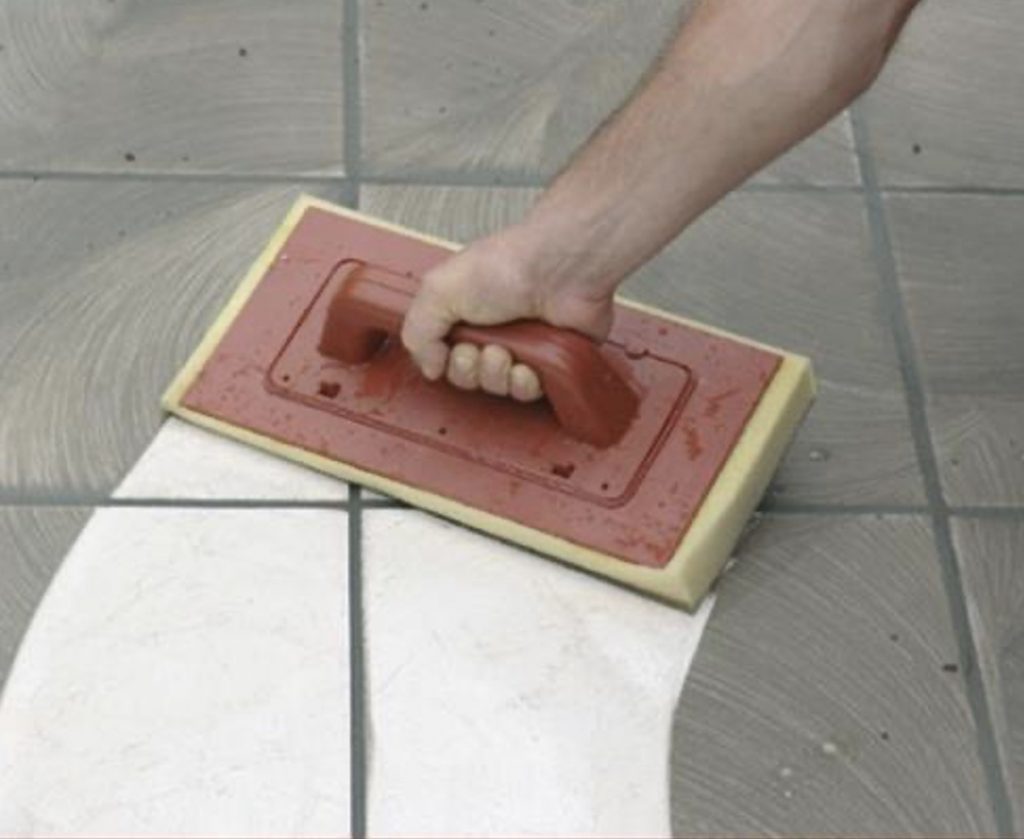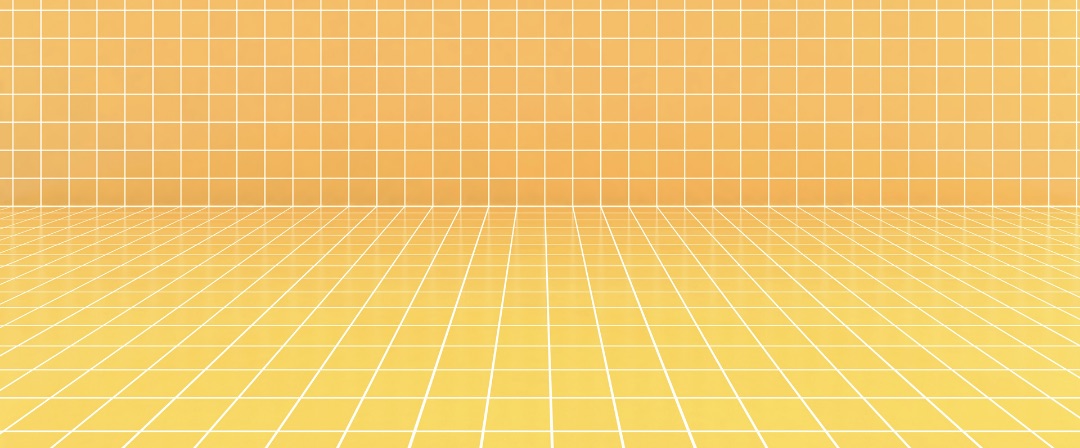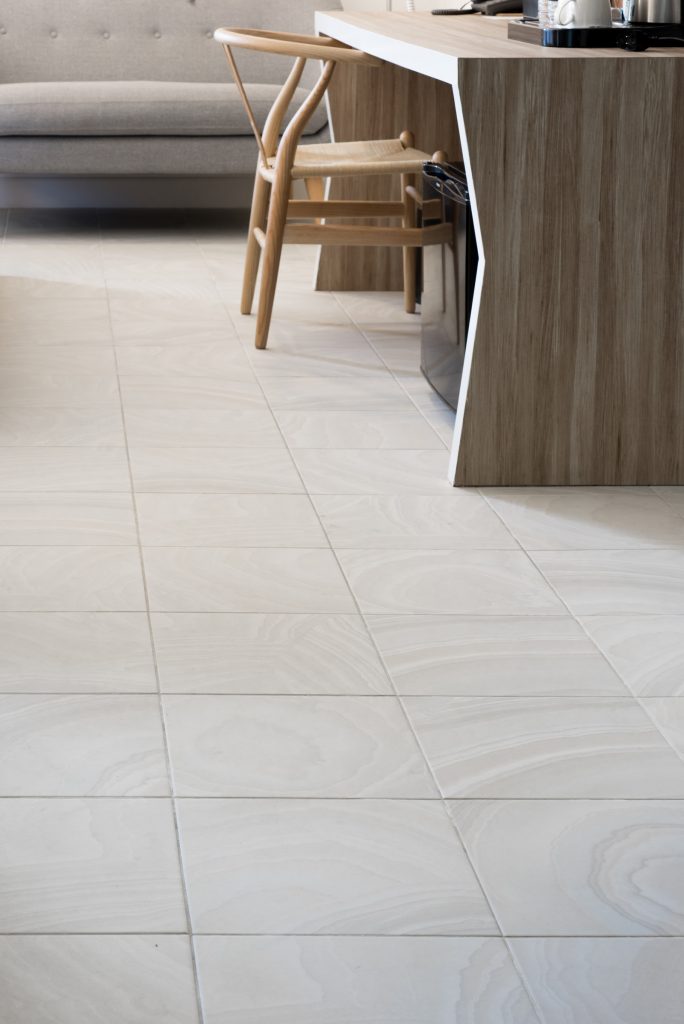Notice streaks on your porcelain tile floors even though you’ve just finished cleaning them? Is your porcelain tile not what it used to be?
You’re not alone! These problems are common to many of us who have tile floors installed, but no need to worry: FILA has designed solutions to eliminate streaks on porcelain!
First off, let’s look at the two main types of porcelain tiles on the market.
Through-body and glazed porcelain tile: what’s the difference?
Through-body tile is composed natural clays with colors that run through the entire thickness of the tile. They are unglazed and extremely strong, offering high resistance to abrasion. In fact, you’ll often see them in high traffic areas like restaurants and shopping centers.
Glazed tile, which comes in either matte or glossy finish, has recently become very popular, particularly because it can be digitally printed to look like wood and natural stone, providing the effect of prestigious materials with the technical merits of tile. In addition, glazed tile is also more economical than full-bodied tile.
So, what are the advantages of porcelain tile floors?
- Resistance: porcelain is resistant to weathering, fire, breakage due to temperature changes, scratches and impact.
- Water repellence: porcelain has a water absorption rate of less than 0.5%, which means that it is practically waterproof. That’s why it’s recommended in areas like bathrooms, kitchens and outdoor flooring.
- Hygienic: porcelain is easy to clean. It does not absorb liquids and does not stain.
What factors contribute to streaks on porcelain tile?
Streaks on porcelain due to incorrect post-construction cleaning
The first cause of streaks and stains on porcelain floors is incorrect post-installation cleaning. When tile is grouted with cementitious grout, residue is left on the surface that cannot be removed by simply rinsing it with water.
But wait… cementitious grout haze can be prevented!
Remove fresh cementitious grout residue during installation

FILA has created INSTANT REMOVER, an instant cleaner that removes fresh cement grout residue during installation, before the grout cures on the tile. Just wait for the grout to initially set and become firm to the touch (usually about 10 to 30 minutes, according to the grout manufacturer’s instructions). Then, spray INSTANT REMOVER Instant Cleaner for Fresh Cement Grout and let sit for 1-2 minutes. For textured tile, let sit for 5-10 minutes. Clean using a damp sponge trowel. For stubborn stains, repeat the above instructions after one hour. INSTANT REMOVER greatly speeds up cleanup time and gives you instant showroom results. Watch the video below!
Remove cementitious grout haze after installation
If cementitious grout has completely cured on the surface, then FILA’s solution is DETERDEK Cementitious Grout Haze Remover, an acid cleaner specifically designed to remove inorganic stains like cured cement grout haze, dry wall residue, plaster residue, paint and construction dirt in general.
FILA suggests testing the product in a small area before treating the entire surface. Just wet the surface and grout joints with water, then use DETERDEK diluted 1:5 (1QT in 5QT of water). Let sit a few minutes, the rub vigorously with an abrasive pad or large brush. Remove the residue with a cloth or wet vac and rinse with plenty of water. Watch the demo video below!
Note: Remember to seal cementitious grout joints to avoid the accumulation of oil, dirt and germs. To find out more about sealing grout joints, read this blog post.
Streaks on porcelain due to layered organic residue
Ironically, what ruins porcelain tile can be incorrect cleaning. The fact that porcelain is a resistant and waterproof material does not mean that you can use any cleaner to maintain it. Ammonia, bleach and cleaners that promise to add a polished effect to the tile may change the original appearance of the floor, leaving a greasy residue on the surface. Although it seems strange that a cleaner could actually “dirty” a surface, incorrect cleaning can create a film that attracts organic dirt, building up layers that then show up as streaks or discoloration across the floor.

When oil and grease (organic stains) have layered on the surface, they must be removed with a degreaser. FILA recommends PS87 Heavy Duty Cleaner to degrease and deep clean tile floors. Just dilute it 1:5 (1QT in 5 QT of water), scrub vigorously with an abrasive pad and rinse thoroughly. You’ll see the dirt buildup dissolve and your tile reveal its natural beauty. Watch the demo video below!
Regularly maintain porcelain tile floors with CLEANALL Neutral All Surface Cleaner diluted 1:200. That’s one capful per gallon of water for a no-rinse application. When CLEANALL is diluted 1:200, it can be used in the tank of floor cleaning machines and does not leave a residue, so it’s perfect for everyday use.



5 Replies to “Streaks on Porcelain Tile Floors: How to Eliminate Them”
Awesome article with great information provided by your article, here I would like to thank you guys for sharing such a fantastic blog. Regards Grout deep cleaning dubai
Awesome article with great information provided by your article, here I would like to thank you guys for sharing such a fantastic blog. Regards Floor deep companies in dubai
Thanks a lot for sharing kind of information. Your article provide such a great information with good knowledge. Here we would like to inform you as we are professional cleaning & painting service providers in Dubai! Regards Water tank cleaning companies in dubai
Thank you for the sharing good knowledge and information its very helpful and understanding. as I have been looking for this information since long time. Regards Tiles cleaning dubai
Awesome blog! Very helpful and understanding article with good knowledge sharing. As we are looking for this information since long time. Regards Tiles grout deep cleaning dubai